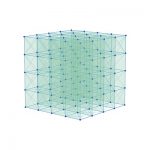A while back, a visitor to our storefront had a loose diamond he wanted to sell. We do not purchase diamonds, but one of our customers at our counter did, and he was interested. After examining the stone, he offered to purchase it. That’s when the salesman revealed that diamond was synthetic, and not actually for sale. He was inviting expert buyers and jewelers to examine this diamond with the same level of scrutiny they’d use for a transaction – only to reveal the diamond’s origin and prove that lab-grown gemstones are just as good as naturally formed ones.
“Synthetic” or lab-grown gemstones actually have the exact same chemical composition as mined gemstones (e.g. a synthetic diamond and natural diamond are both crystalized carbon). The major difference between the two is their market value – with lab-grown gems going for an average of 50% less than natural gems of similar size and grading. There’s nothing wrong with buying or selling lab-created gemstones as long as there is full disclosure. However, it’s not hard to imagine overpaying for a synthetic gemstone that is advertised as “natural.”
Fortunately, it is possible to tell the difference between synthetic and natural gems if you know what to look for. Natural gemstones often form in the presence of other minerals and gases, which cause color variations, inclusions, fissures, and other flaws. In the laboratory, gems are formed in a regulated environment that excludes the extraneous minerals and gases found in nature. In a phrase, natural gemstones tend to have more “character” than synthetic gems.
Unfortunately, there is no way to identify a gemstone’s origin with 100% accuracy. To help, we created this “cheat sheet” of tips you can use to tell the difference between natural and synthetic gems. Of course, you should always ask for a certificate of authenticity or origin as part of any deal. Also, remember that dealers are mandated by the FTC to disclose whether the gemstone is natural, lab-grown, and/or treated.












